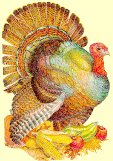

Hercules will run on the following Windows platforms:
"Out of Environment space" (or similar)
during installation. You then need to add a line like this to CONFIG.SYS
SHELL=C:\COMMAND.COM /E:4096 /PWhere 4096 would be the new environment size.
You will also need the following Software
You will also need a telnet client. The telnet clients available with Linux are working nicely, as is the telnet client of Windows NT. Unfortunately, the client that comes with Windows 2000 does not really work, and I have heard similar stories for the Windows 98 telnet client.
What do Windows 2000 users or Windows 98 users do then? If you have a Windows NT system as well, copy the telnet.exe from that NT System to your Hercules box, and call it tn.exe there. If you haven't got access to an NT System, a telnet client is provided for you as tn.exe in the /windows directory of the Tur(n)key CD-ROM system. If you want, you can also use the Hyperterm application that is part of Windows
You might also take a look at PuTTY - a free implementation of Telnet and SSH for Win32 platforms, along with an xterm terminal emulator.
>>--- setup ---+--------------+--------------+----------------+--------->
| | | |
+----- -d -----+ +------ -n ------+
use debug mode use No-ANSI mode
>-------------+--------------+--------------+----------------+--------->
| | | |
+----- -a -----+ +------ -s ------+
automatic mode simple setup
use defaults use alternate defaults
>-------------+--------------+----------------------------------------->
| |
+-- -t dir ----+
target directory
Installation is quite straight forward. Insert the CD-Rom into a CD-Rom drive on your machine,
change to that drive,
and enter the command
setupThe installation scripts use ANSI control sequences for fancy colors etc. If you don't like this feature, you can turn it off by invoking setup like this:
setup -nThe installation script will start now, and you will have to reply to a few questions now:
You can automate some of the processing by using additional options:
setup -a
will use all the defaults and will only ask you one simple question before installing.
setup -t dirname
will use dirname as the target directory instead of prompting you for it.
setup -swill select a different set of defaults which may or may not be more to your taste. It provides a somewhat simpler layout (thus the flag -s) The same setup can also be selected from the installation menu option 2.
| Default setup | Simple setup | |
|---|---|---|
| Printer 1 | Started | Drained |
| Printer 2 | Started | Drained |
| Punch 1 | Started | Drained |
| Reader 1 | Started | Drained |
| 3277 Master Consoles | 2 | 1 |
| 3215 Master Consoles | 1 | 0 |
| Socket reader | Yes | No |
| Autostart MF1 | Yes | No |
If you prefer a different scheme, you may want to try the setterm script which allows to change some of the values above
Of course, all these options can be combined, like in
setup -ast C:\mvs38j
Which will use the simple setup and will automatically install it
into the target directory c:\mvs38j
If no options were presented, you will be asked a sequence of questions:
MVS 3.8J System Installation/Generation
1. Install MVS Turnkey system - standard setup Debug: off
2. Install MVS Turnkey system - simple setup ANSI: on
3. Install MVS Starter system and SYSGEN files
x. Exit
Your choice ===>
Choosing option 1 will install a ready-to-run MVS 3.8 system, option 2 will install the simpler ready-to-run MVS 3.8 system, and option 3 will install a starter system and will give you the chance to do a full MVS system generation.
Choose your installation path now: